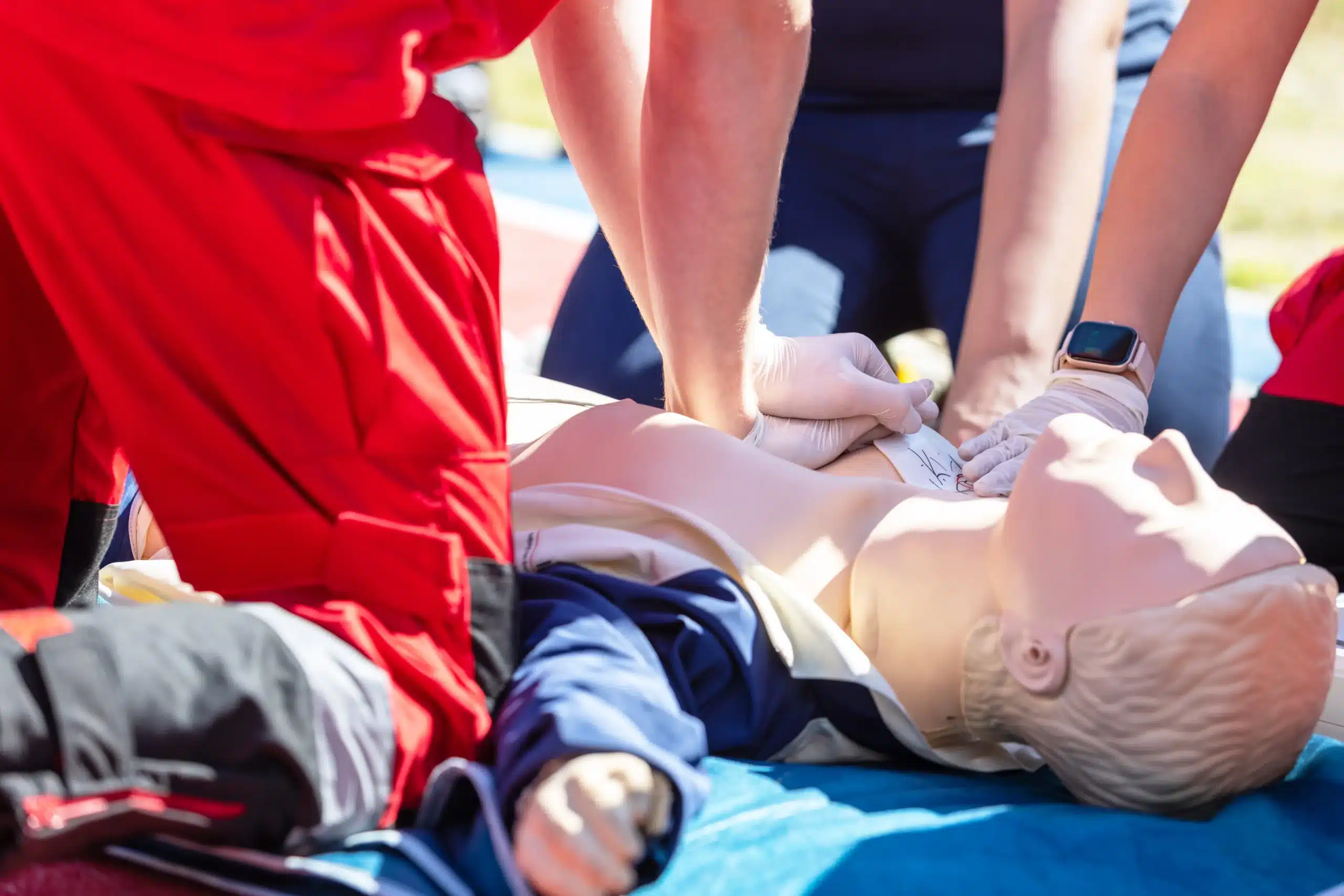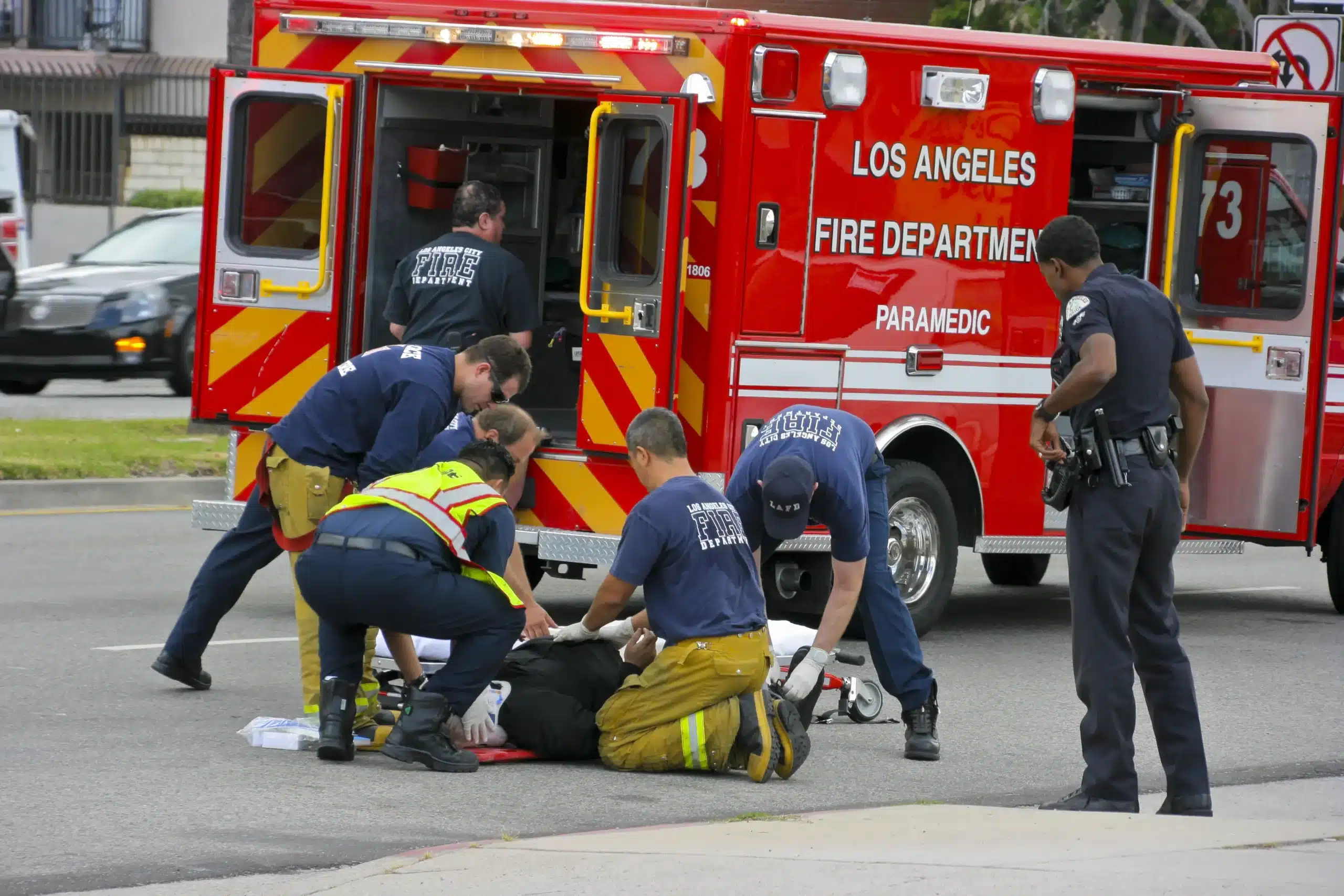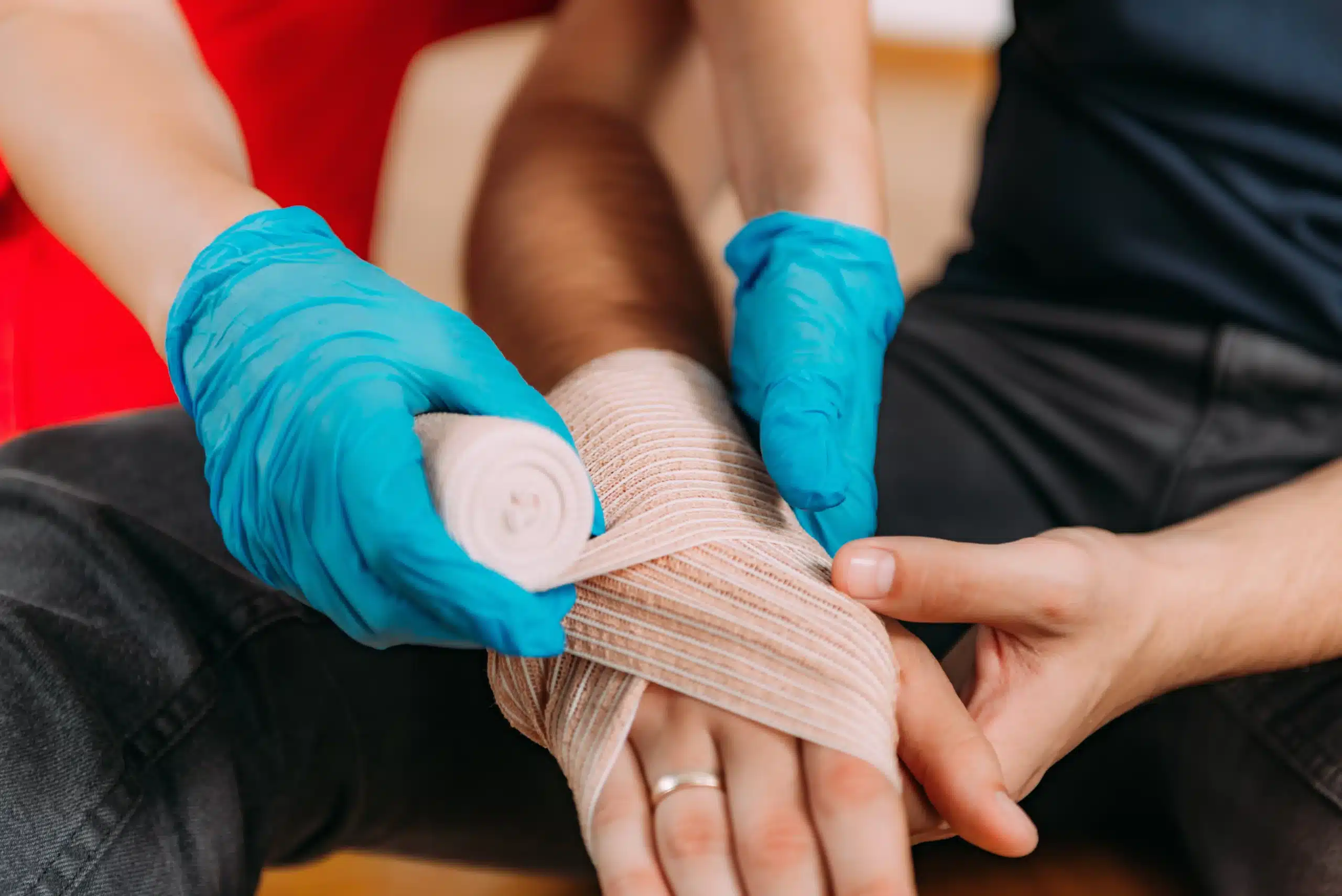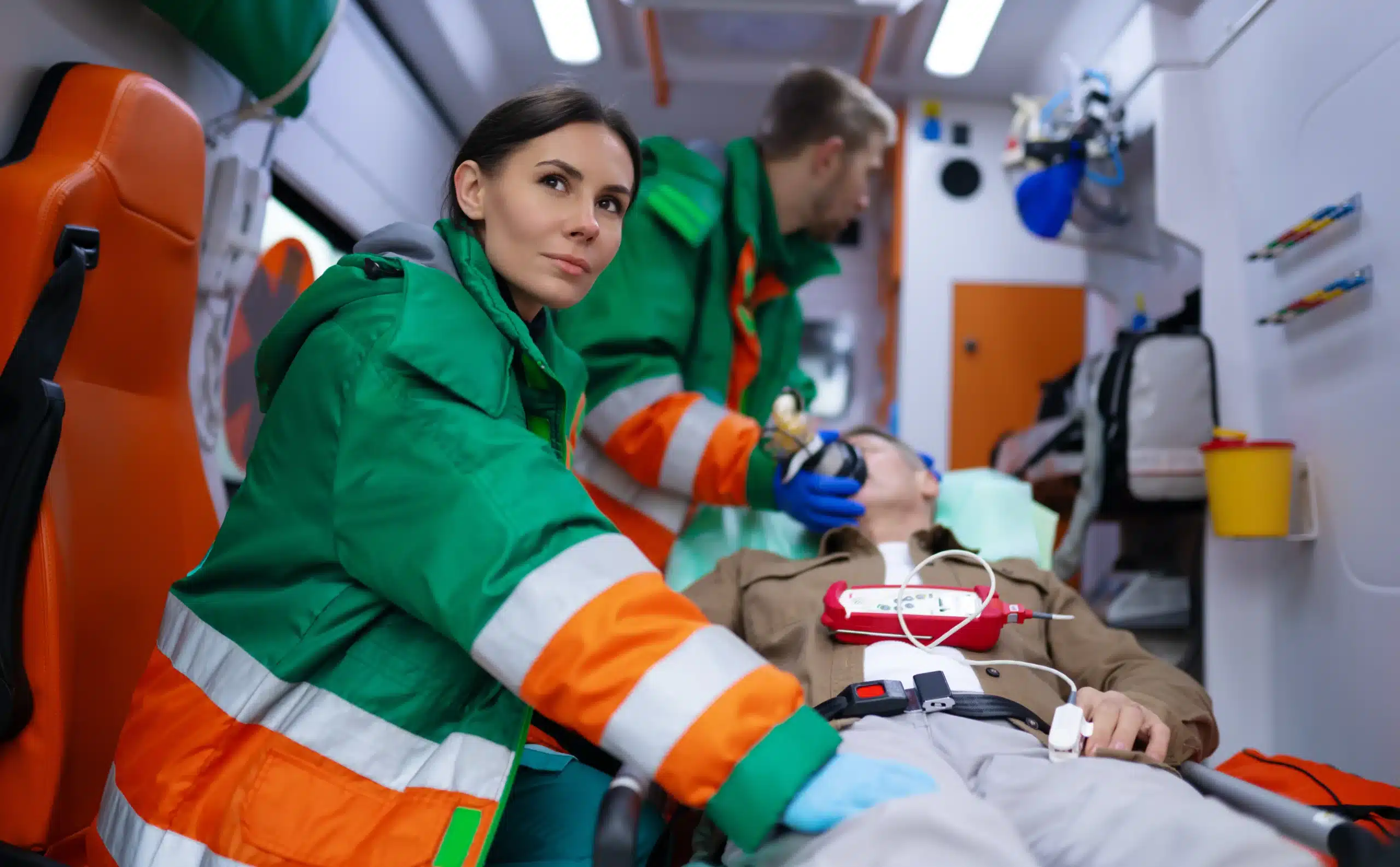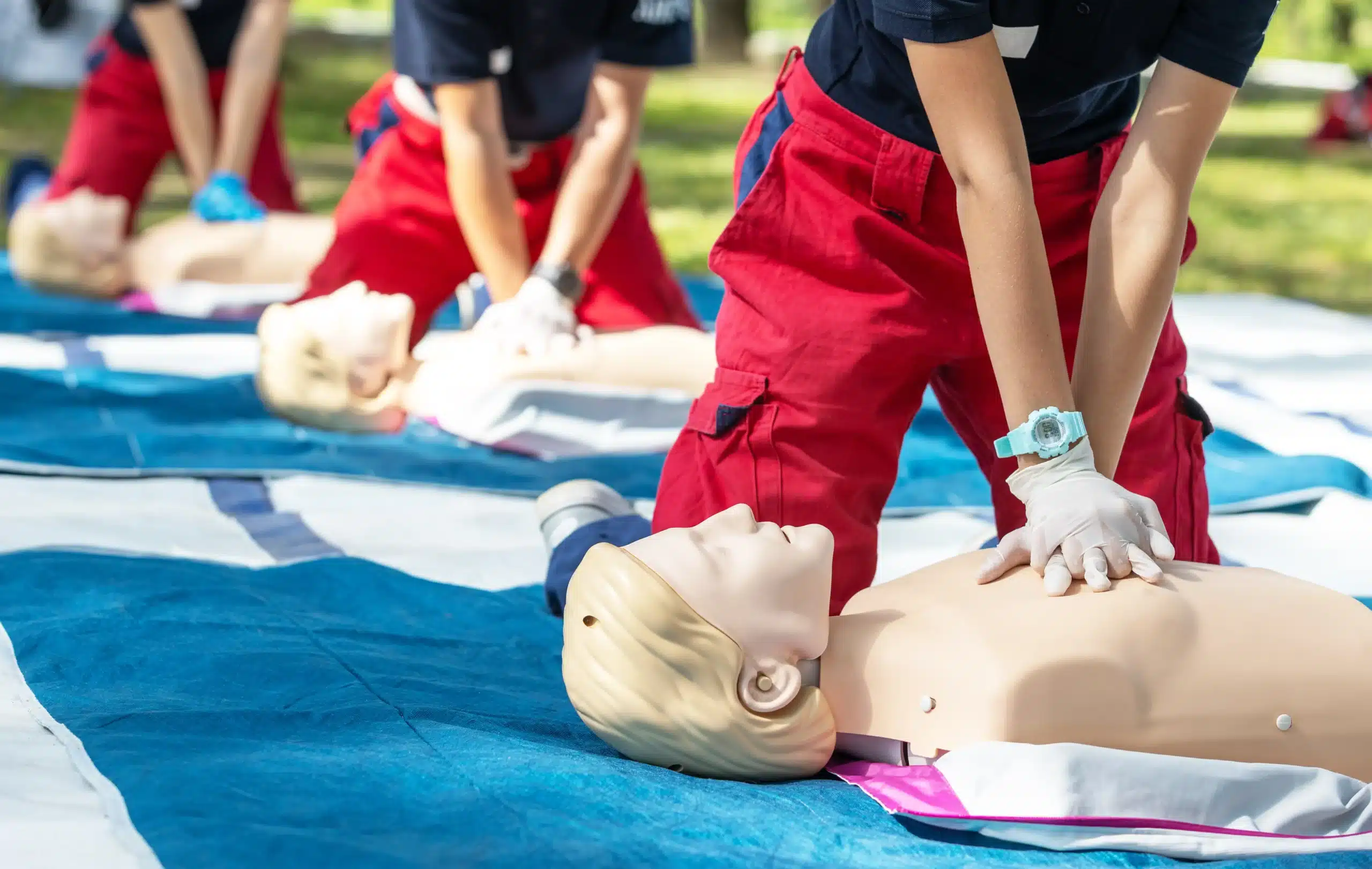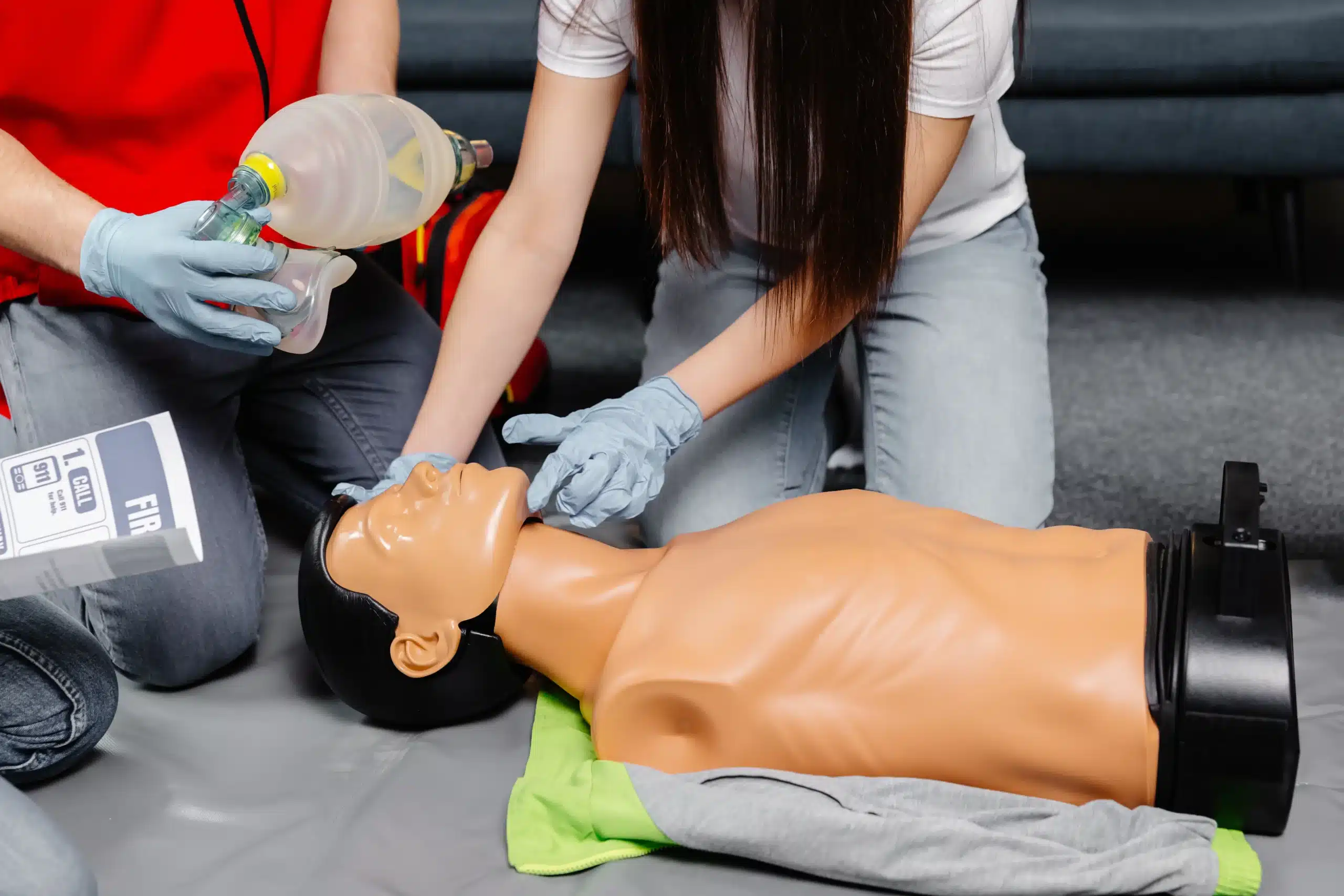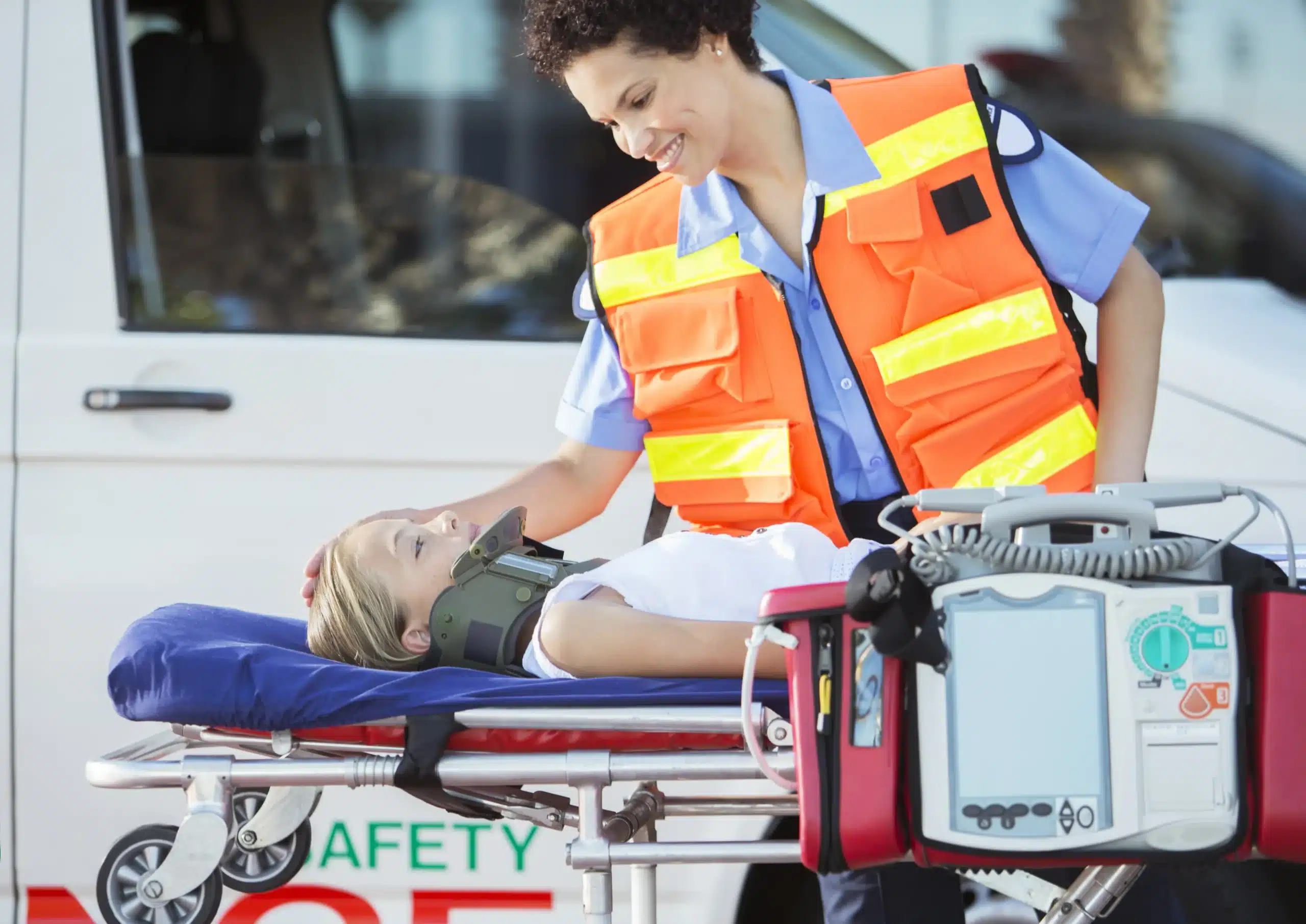Learning first aid is like adding a superpower to your everyday life—it empowers you to handle unexpected medical situations with confidence and potentially save a life. But with so many options available, finding the right “first-aid classes near me” can feel overwhelming. This guide breaks down everything you need to know, from the different types of first-aid courses to what to expect in a class and how to choose the right training provider. We’ll explore reputable organizations like Fresno CPR Classes, the American Red Cross, and the American Heart Association, and discuss the benefits of certification, average pricing, and ways to keep your skills sharp. Let’s equip you with the knowledge and resources to find the perfect first-aid training near you.
Key Takeaways
- Find the right fit: Choose between online or in-person first-aid training based on your learning style and schedule. Consider certification validity, instructor qualifications, and course content.
- Understand first-aid levels: From basic wound care to advanced life support, different courses meet various needs. Select training that aligns with your goals.
- Maintain your skills: Regular practice and recertification are key to staying prepared. Keep your knowledge sharp to confidently handle emergencies.
What are First-Aid Classes?
First-aid classes teach you how to respond to medical emergencies. These courses equip you with practical skills to assist someone experiencing a sudden illness or injury. You’ll learn techniques to stabilize the situation until professional medical help arrives. Think of it as a toolkit of life-saving skills, empowering you to confidently handle a range of situations—from minor cuts and burns to more serious events like choking or a heart attack. First-aid training covers essential procedures, including CPR, how to use an AED, and how to manage bleeding and fractures. It’s about being prepared and having the knowledge to make a real difference when it matters most. Whether at home, work, or in your community, first-aid training gives you the ability to respond effectively and potentially save a life. Explore different types of first-aid courses to find the best fit for your needs.
Types of First-Aid Classes
First-aid classes cover a range of skills, from treating minor injuries to managing life-threatening emergencies. Understanding the different types of classes available helps you choose the best fit.
Basic First Aid
Basic first-aid courses teach you fundamental skills to handle common injuries like cuts, burns, and sprains. You’ll also learn to recognize serious medical issues, such as heart attacks or strokes, and when to call 911. A basic first-aid course is a practical starting point for anyone who wants to develop life-saving skills.
CPR and AED Training
CPR and AED training teaches you cardiopulmonary resuscitation and how to use an automated external defibrillator. These skills are essential for responding to cardiac arrest and other life-threatening emergencies. CPR certification levels range from Basic Life Support (BLS) for healthcare providers to CPR/AED training for the general public. Knowing CPR can give you the confidence to act quickly and potentially save a life. CPR class costs vary, so compare options before registering.
Advanced First Aid
Advanced first-aid classes expand on basic skills, covering more complex medical situations. These courses may include administering medications, managing allergic reactions, and treating trauma injuries. Advanced certifications like Advanced Cardiovascular Life Support (ACLS) are often required for healthcare professionals.
Specialized Courses
Specialized first-aid courses address specific needs and environments. Pediatric first aid focuses on caring for infants and children, while wilderness first aid prepares you for medical emergencies in remote areas. Other specialized courses cater to specific industries, such as construction or childcare. Consider your personal or professional circumstances when choosing a specialized course. For example, pediatric first aid is highly relevant for anyone working with children.
Find First-Aid Classes Near You
Finding the right first-aid class shouldn’t feel overwhelming. Whether you’re a healthcare professional needing recertification or just want to learn essential life skills, a few simple strategies can point you in the right direction.
Online Search Strategies
Start by searching online. Use specific keywords like “first-aid training,” “CPR classes,” or “BLS certification” along with your city and state. This targeted approach helps filter results and connect you with relevant providers. For example, searching for “first aid classes Fresno CA” quickly identifies local options. You can also check online business directories and review sites like Yelp or Google Business Profiles to see ratings and student feedback. Don’t forget community forums and social media groups for recommendations. Reading reviews from others can give you valuable insights into the quality of instruction and overall experience. As you research, compare class prices, which typically range from $40 to $100 depending on the course type and format. Many providers offer flexible scheduling, including weekend and evening classes, to accommodate busy schedules.
Check Local Resources
Beyond online searches, tap into local resources. Community centers, hospitals, and recreation departments often host first-aid and CPR training programs. These classes are sometimes offered at reduced rates or subsidized through community programs. Contact your local fire department or ambulance services; they may offer public courses or direct you to reputable training providers. Don’t overlook word-of-mouth. Ask friends, family, and colleagues for recommendations. They might have personal experience with providers in the area and offer valuable insights. If you’re looking for a group discount, check with training centers like Fresno CPR Classes that offer reduced rates for multiple participants. This can be a great option for workplaces, community groups, or families learning together.
Top First-Aid Training Providers
Finding the right first-aid training provider is key to receiving high-quality instruction. Here are a few reputable organizations and resources to consider:
Fresno CPR Classes
Fresno CPR Classes offers convenient and affordable training options. They provide a range of American Heart Association certifications, including BLS, ACLS, PALS, and more. CPR class prices generally range from $40 to $100, depending on the certification, the class format (in-person, blended, or online), and the training center. Fresno CPR Classes also offers group discounts and RQI classes, making them a versatile option for individuals and groups. Their commitment to low prices makes quality training accessible. If you’re in Fresno, Clovis, or Madera, CA, contact them to learn more.
American Red Cross
The American Red Cross is a well-known provider of first-aid training. They offer various courses, including basic first aid, CPR/AED, and advanced first aid. With options for online, in-person, and blended learning, you can choose the format that best suits your needs. The Red Cross’s established reputation and widespread availability make them a reliable choice.
American Heart Association
The American Heart Association is another leading provider of CPR and first-aid training. They offer a range of courses designed for healthcare providers and the general public. Many training centers across the country offer AHA-certified courses, so you can likely find a class near you. For example, CPR Certification NYC provides AHA-certified classes in New York City. Look for local providers in your area offering AHA certification.
National Safety Council
The National Safety Council offers a comprehensive selection of first-aid training programs. Their courses cater to various audiences, from workplace safety training to community-based first-aid classes. The NSC focuses on providing practical skills and knowledge to help individuals respond effectively in emergencies. Explore their website to find a suitable course.
Local Hospitals and Community Centers
Don’t overlook your local resources! Many hospitals and community centers offer first-aid training programs. These programs are often tailored to the specific needs of the community, providing accessible and relevant training. Check with your local hospital or community center for upcoming first-aid classes. They can be a cost-effective and convenient way to gain essential life-saving skills.
Choose the Right First-Aid Class
So you’ve decided to get first-aid certified—great! Now, how do you pick the right class? Here’s what to consider:
Online vs. In-Person Classes
First, think about your learning style and schedule. Do you prefer the flexibility of learning online, or would you benefit more from the hands-on experience of an in-person class? Both have their advantages. Online courses let you learn at your own pace, while in-person training offers immediate feedback from an instructor and the opportunity to practice skills in a real-world setting. Fresno CPR Classes offers a variety of courses to suit different preferences.
Certification Validity and Recognition
Before you sign up, check how long your certification will be valid. Most first-aid certifications are good for two years. Make a note of the expiration date and be sure to sign up for a renewal course to keep your skills sharp. Fresno CPR Classes offers certification cards valid for two years, along with their low price guarantee.
Instructor Qualifications
Learning from a qualified instructor is key. Look for classes taught by certified professionals with experience in emergency response. This ensures you receive high-quality training you can rely on in a real emergency. Learn more about the instructor’s qualifications on the Fresno CPR Classes contact page.
Course Content and Duration
First-aid courses cover a range of topics, from basic wound care to managing more serious injuries. Consider what skills you want to learn and how much time you can commit. Course duration can range from a few hours to a full day, and prices typically vary from $40 to $100, depending on the content and format. Fresno CPR Classes offers daily classes in over 60 cities, making it easy to find a course that fits your needs. Check out their blog for a complete guide to CPR classes.
Cost and Accessibility of First-Aid Training
Knowing the cost and what’s available helps you plan for your first-aid training. Let’s break down pricing, explore ways to save, and look at options that make training accessible to everyone.
Average Pricing
First-aid class prices typically range from $40 to $100. Several factors influence the final cost, including the type of certification—for example, a basic first-aid course might be less expensive than a specialized course like BLS certification—the format (in-person, blended, or online), and the training center. Fresno CPR Classes offers a low price guarantee.
Discounts and Financial Aid
Many training providers offer discounts, so it’s always worth asking! Some common discounts include those for groups, students, or members of specific organizations. Occasionally, you might find financial aid opportunities or scholarships, especially for those pursuing healthcare careers or volunteering. Check with your chosen provider to see what they offer. Contact us to learn more about discounts for Fresno CPR Classes.
Group Rates
If you’re training with friends, colleagues, or a community group, look into group discounts. Many providers offer reduced rates for group bookings. This can be a great way to make training more affordable and convenient. Contact training centers directly to discuss group rates and minimum participant requirements. They can often tailor a program to fit your group’s specific needs.
What to Expect in a First-Aid Class
Knowing what awaits you can boost your confidence before your first-aid training. Here’s a glimpse into a typical first-aid class:
Class Structure and Materials
First-aid classes usually combine instruction with hands-on practice. Your instructor will guide you through essential life-saving skills using lectures, demonstrations, and interactive exercises. Expect visual aids like presentations and videos, along with physical materials like bandages, dressings, and resuscitation mannequins. Fresno CPR Classes offers a range of courses, from the basics to advanced certifications like BLS and ACLS. Our CPR and First Aid Training Guide offers more details about each course.
Hands-On Practice
The most effective way to learn first aid is through direct experience. A large part of your class will be hands-on, allowing you to apply techniques in simulated emergencies. You’ll practice bandaging wounds, applying splints, and performing CPR on mannequins. This practical training builds muscle memory and confidence for effective responses under pressure. Our in-person training offers personalized attention and the hands-on practice you need to feel prepared.
Assessment and Certification
Most first-aid courses include a final assessment to gauge your understanding and skills. This might be a written exam, a practical demonstration, or a combination of both. After successfully completing the assessment, you’ll receive certification, validating your first-aid knowledge. Fresno CPR Classes provides AHA-certified courses, ensuring your certification is widely recognized. These certifications are usually valid for two years, after which a refresher course is needed.
Benefits of First-Aid Training
Learning first aid offers significant advantages, from handling everyday mishaps to potentially saving a life during a crisis. It empowers you to confidently respond to various medical situations and contribute to a safer environment for yourself and those around you.
Prepare for Emergencies
First-aid training equips you with the skills to handle medical emergencies effectively. Think of it as having a well-stocked toolkit for medical situations—you’ll know how to assess injuries, control bleeding, manage shock, and provide basic life support until professional help arrives. This preparation can make all the difference in critical situations, potentially saving lives. Fresno CPR Classes offers a range of courses to get you ready for emergencies.
Enhance Workplace Safety
CPR and first-aid training are crucial for workplace safety. These skills empower you to respond effectively to accidents and sudden illnesses on the job, creating a safer work environment. A culture of preparedness reduces response times in emergencies and can significantly improve outcomes. Consider exploring options for CPR classes in Fresno to enhance your workplace’s safety measures.
Contribute to Your Community
Knowing first aid allows you to be a valuable asset to your community. You’ll be equipped to handle medical situations at home, in public spaces, or during community events. Being able to manage emergencies before professional medical assistance arrives contributes to the overall safety and well-being of your community. Learn more about how the different types of first aid training can benefit your community.
Maintain Your First-Aid Skills
It’s great that you’re interested in learning first aid—or brushing up on what you already know! But like any other skill, first aid requires ongoing practice. Here’s how to keep your skills sharp:
Refresher Courses and Recertification
First aid certifications are typically valid for two years. To stay certified, sign up for recertification courses when your current certification expires. These refresher courses cover updated guidelines and techniques, ensuring you’re always prepared to provide effective assistance. Fresno CPR Classes offers a variety of recertification options to fit your schedule. Contact us to learn more about convenient and affordable recertification classes.
Practice Your Skills
Regular practice is key to maintaining proficiency in first aid. Think of it like any other skill—the more you practice, the more confident and effective you’ll become. Hands-on training reinforces your knowledge and builds muscle memory, allowing you to respond quickly and calmly in real-life emergencies. Consider joining practice sessions or creating simulated scenarios with friends or family to keep your skills fresh. The American Red Cross offers helpful resources and information on the importance of ongoing practice. You can also explore different class formats, like online or blended learning, to find a training style that works best for you. Fresno CPR Classes offers a range of courses, including BLS certification, to help you maintain your skills. Check out our low price guarantee and find a class near you.
Evaluate First-Aid Training Providers
Finding the right first-aid training can be tricky. Beyond a quick search for “first-aid classes near me,” how do you know you’re choosing a reputable provider offering high-quality training? Here’s what to look for:
Accreditation and Reputation
A provider’s reputation speaks volumes. Look for organizations with recognized accreditation and a history of delivering comprehensive and up-to-date training. Established organizations like the American Red Cross and the American Heart Association often set the standard for quality. Also, check if the provider is affiliated with any respected medical organizations. These affiliations can indicate a commitment to current best practices in first aid. For local providers, like Fresno CPR Classes, explore their website for information about their instructors’ credentials and the curriculum they follow.
Student Reviews
Before committing to a class, see what other students say. Online reviews and testimonials offer valuable perspectives on the quality of instruction, the learning environment, and the overall experience. Check platforms like Google Reviews, Yelp, and even social media pages for honest feedback. Reading reviews can help you gauge whether the training style and content align with your learning preferences.
Quality of Training Equipment
Hands-on practice is a cornerstone of effective first-aid training. When evaluating providers, inquire about the type of training equipment they use. Do they provide realistic mannequins and practice supplies? Modern and well-maintained equipment allows for a more immersive learning experience, bridging the gap between theory and practical application. Ask if the class size is appropriate for the amount of equipment available. A lower student-to-mannequin ratio ensures everyone gets ample practice time. This practical experience builds confidence and competence in applying first-aid techniques in real-life scenarios.
Related Articles
- First Aid Training in Fresno: Your Guide – Fresno CPR Classes
- CPR & First-Aid Training in Fresno: A Complete Guide – Fresno CPR Classes
- CPR Classes in Madera: Find Training Near You – Fresno CPR Classes
- CPR & First Aid Training in Clovis: Your Guide – Fresno CPR Classes
- Pediatric CPR & First-Aid Training in Madera – Fresno CPR Classes
Frequently Asked Questions
What’s the difference between basic first aid and advanced first aid? Basic first aid focuses on common injuries like cuts, burns, sprains, and recognizing when to call 911 for more serious issues. Advanced first aid delves into more complex scenarios, such as administering medications, managing severe allergic reactions, and handling trauma injuries. It builds upon the fundamentals of basic first aid, equipping you with a broader skillset for diverse medical situations.
How do I choose the right first-aid class for me? Consider your specific needs and goals. If you’re looking for general knowledge and essential skills, a basic first-aid and CPR/AED course is a great starting point. Healthcare providers or those seeking more comprehensive skills should explore advanced courses like ACLS or PALS. Also, think about your learning style. Do you prefer the flexibility of online learning or the hands-on experience of an in-person class? Many providers offer both options, so choose the format that best suits your preferences and schedule.
How much do first-aid classes typically cost? Prices typically range from $40 to $100, depending on the course type, format (online, in-person, or blended), and the training provider. Look for providers like Fresno CPR Classes that offer a low-price guarantee and explore potential discounts for groups, students, or members of specific organizations.
How long is a first-aid certification valid, and how do I renew it? Most first-aid certifications are valid for two years. To maintain your skills and keep your certification current, you’ll need to take a recertification course before it expires. Check with your certifying organization or training provider for recertification options and schedules.
What can I expect during a first-aid class? Expect a combination of instruction and hands-on practice. Instructors use lectures, demonstrations, and interactive exercises to teach essential life-saving skills. You’ll also have opportunities to practice techniques on mannequins and with other training equipment, simulating real-world emergency scenarios. A final assessment, often involving both written and practical components, evaluates your understanding and skills before you receive your certification.
